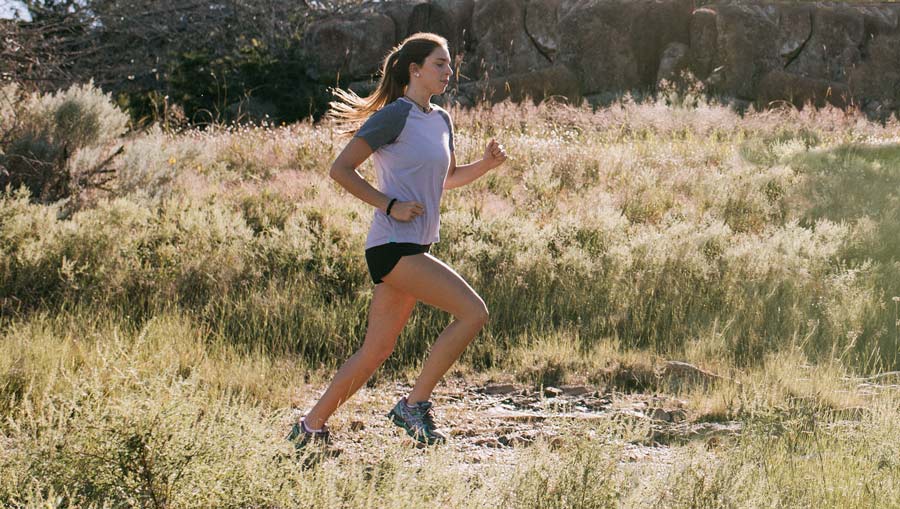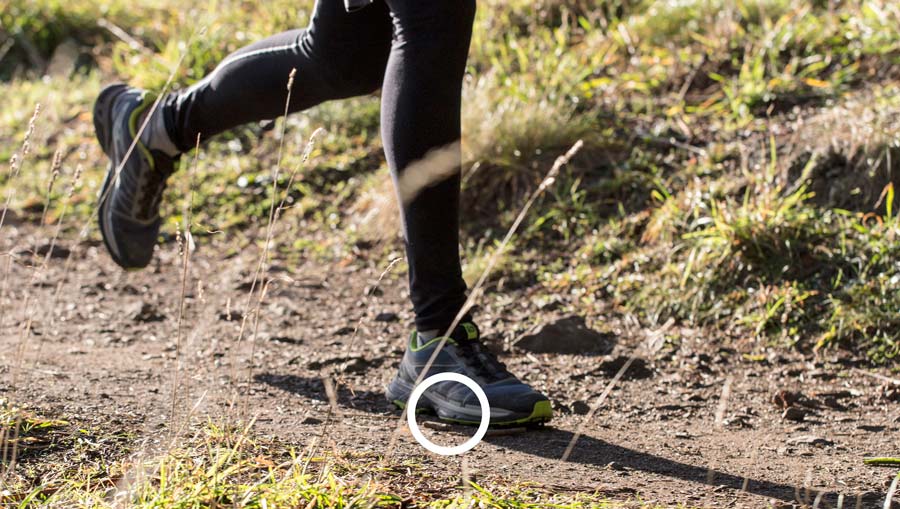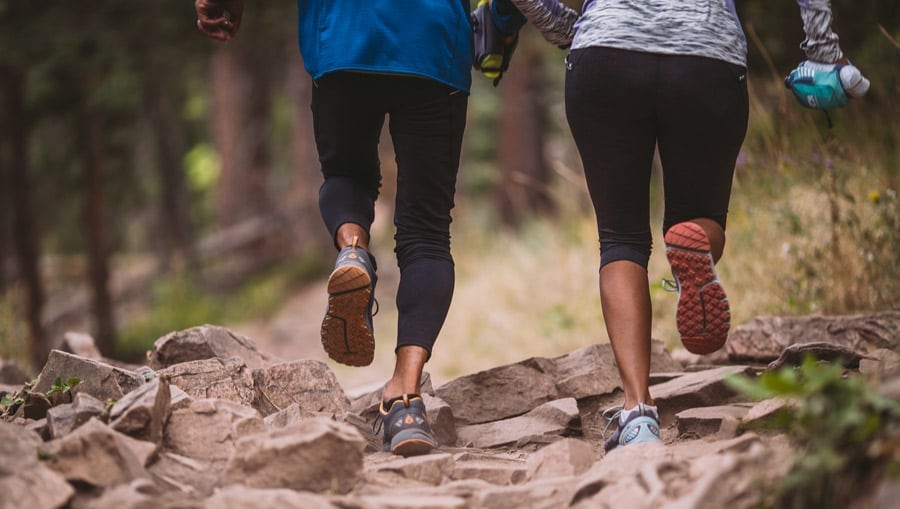Trail running is really obstacle-course running, a seemingly endless romp over rocks and roots. On a really technical trail, the terrain can be twisted, the hills relentless and the footing dicey. You have to choose your line and make split-second decisions about how to maneuver your body.
This article offers tips to help newly muddied trail runners and crossover road runners to improve technique. You won't transform from stumblebum to trail dancer overnight, but you can become a more efficient runner and reduce your chances of injury.
Video: Trail Running Techniques
Off-Trail Exercises
Not surprisingly, cross training helps make you a better runner. Trail work is important, but too much of a good thing can lead to overuse injuries. Replace some of those runs with the activities below to boost strength, endurance, balance and flexibility.
Resistance training: Whether it's weight work or old-school staples like push-ups, sit-ups, crunches and planks, anything that strengthens your core is a plus on the trail, where balance is key. Strength exercises also help improve endurance.
Once you decide on the right mix of exercises, you need to do them at least a couple times a week to be effective. And vary your exercises occasionally, because your body adapts to repetitive tasks and gets diminishing value from the same exercise over time.
Yoga: Its primary benefit is improved balance, but yoga also improves your flexibility and body awareness. Start by signing up for a weekly class, then work with your instructor to tailor your sessions and practices for trail running.
Stretching: Hill work, switchbacks and sudden adjustments in stride to ensure a solid landing spot all require excellent flexibility. Thus it's worth extending the amount of time you currently stretch, and to add some additional stretches to your routine.
It's important, too, for you to stretch after your body is already warmed up. Stretching while your muscles are cold can lead to injury.
Overall Trail-Running Tips

Eyes Front, Please
Gawking at scenery and staring at your feet are two temptations to resist. Instead, you want to keep your eyes down and scan the trail 10 to 15 feet in front of you for obstacles.
Shorten Your Stride
Shortening your stride can make you more agile and able to react quickly to obstacles. You'll also be able to lengthen a single stride when needed—to avoid landing on a rock or muddy patch, for example. (If you're already taking long strides, you forfeit the amount of "emergency" extension you have available.)
Keep Your Shoulders Straight
Hunched shoulders put stress on your back and rob your lungs of inflation space. They are also a sign you're too tense, so take a moment to relax them. Then hold your shoulders straight, align them with your back and lean your whole body slightly forward as you run.
Whenever you run, check your running posture periodically. Are you hunched over? Straighten up. Are your shoulders caving forward? Roll them back.
Hone Your Arm Swing
Keep your hands in relaxed fists. Orient your arms so they are perpendicular to your torso, rather than pumping diagonally across it. Your fist should lightly graze the side of your running shorts on each swing.
Having an efficient swing motion helps you build forward and upward momentum through your entire torso, rather than relying solely on your legs.
Downhill Trail-Running Tips
Wing Out Your Elbows
Charging down a steep, rocky trail is a balancing act. Wing out your elbows to improve your control, just as a tightrope walker might hold arms out for balance.
Land on Your Midfoot

The argument in favor of a midfoot strike is twofold: maximizing balance and minimizing injury.
Much like in skiing, staying over your center of gravity, rather than behind it, helps you maintain balance and control your speed on descents. If you're landing on your toes or heels, you're less likely to stay over your center of gravity.
In addition, if you're a new trail runner, it takes time to develop precision in your stride. If you're a forefoot or a rearfoot striker, a misstep can lead to a rolled ankle and/or a tumble. Aiming for the midfoot simply gives you a greater margin for error.
Note that pain and injury can also result from changing to a different foot strike. So pay careful attention to how your body feels and go slowly with any stride changes.
Uphill Trail-Running Tips

Shorten Your Stride Even More
Bounding up a hill isn't sustainable. When you're climbing steep hills, short, quick strides will be easier on your cardio system. They'll also help you avoid strains to your Achilles' tendons, hamstrings, calves and glutes.
Switch to Speed Hiking
On sustained hills, speed hiking is often more efficient than trying to keep up a running cadence. This is especially true on a longer run or race, where preserving your endurance is key. With practice, you can maintain almost the same pace with a much lower energy output.
Find a Running Class or Club at REI
You can also get technique help from trail-running classes and clubs:
Find your class


